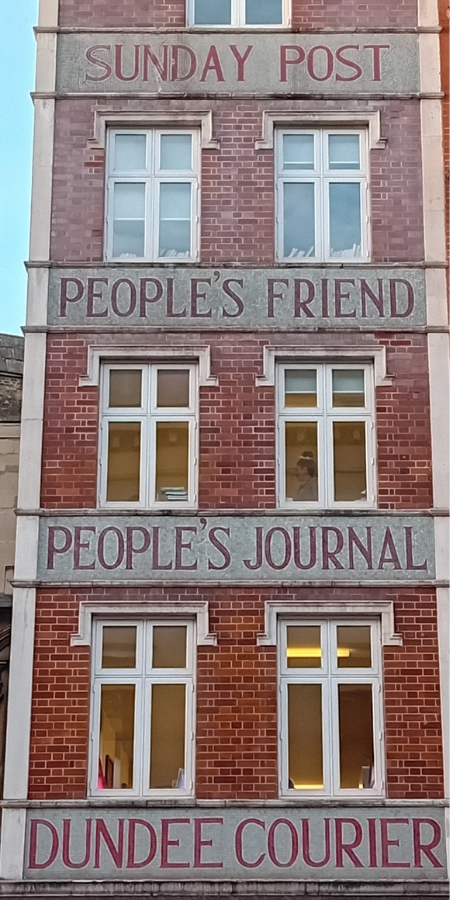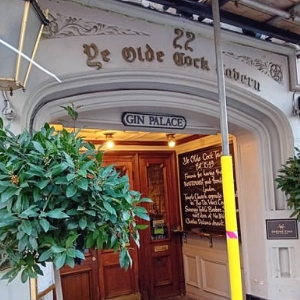A 10 minute CT scan for Jen at St Bartholomew’s Hospital, London, gave scope for an afternoon discovering the delights of some old Fleet Street pubs. We found 7 pubs on Fleet Street.

Postman’s Park
We first cut through tidy Postman’s Park, which commemorates brave souls young and old who sacrificed their lives for others.



The many heroes included Henry James Bristow, aged eight, who saved his little sister in a fire before perishing himself.
The 7 Pubs on Fleet St, London
The Punch Tavern
With the magnificent view of majestic St Pauls Cathedral slowly diminishing, we entered our first pub, the Punch Tavern and it was like stepping back in time.

Old, arched etched glass skylights in an ornate plaster ceiling looked down on a marble-topped bar with a wood and tiled floor, edged with wood panelling and banquet seating.1
This place was named after the famous magazine whose staff used to frequent it. If only walls could talk, I bet they had a right laugh in here.



Though we had the choice of a 100-plus gins we opted for two halves of Tribute (£5.20 total) and good it was too.
The Crown and Sugar Loaf
Just next door was the Crown and Sugarloaf, which has a similar trapped in time feel to the decor – same marble-topped bar but with a mosaic tiled floor and a much welcome heating system by the seating.



Another nice lady behind the bar told us it used to be part of the Punch Tavern, as we supped two halves of Samuel Smith’s Old Brewery Bitter from the keg (£4.90 total).
The Old Bell Tavern
Next up on our Fleet Street foray was the Old Bell Tavern, at which a board proudly declared it was a famous Fleet Street pie house built by Sir Christopher Wren to house stonemasons rebuilding St Brides after the Great Fire of London. (1666).



Originally the pub could only be reached via an alleyway from Fleet Street, and has a long association with printing as one of the first printing presses operated here around 1500



A half of tasty London Pride and Adnams Ghost Ship (£5.95 total) gave us the fire we needed as we surveyed the colourful stained glass front window, flagstone floor, dark wood furniture and nooks and crannies behind the strings of LED lights.e
Ye Olde Cheshire Cheese
The next pub we visited has been serving ale since 1538 during the reigns of some 17 monarchs.
Ye Olde Cheshire Cheese sits down an alleyway and we were greeted by a welcoming real fire in the cosy front bar as we ordered two halves of their own beer, brewed by Samuel Smith’s brewery (£6 total).



The pub burrows down into the earth on three levels, with a number of snug subterranean drinking rooms in which centuries of supping have taken place.
The site formed part of the guest house of the 13th century Carmelite Monastery, a poster on the wall proclaims.
Literary lions Dr Samuel Johnson and Charles Dickens are said to have dined in the chop room, a traditional dining room with a long oaken table.
As the clock ticked on we rejoined bustling Fleet Street, passing the former offices of the Sunday Post, People’s Friend, People’s Journal and Dundee Courier.

Ye Olde Cock Tavern
At Ye Olde Cock Tavern, established in 1549, a board declared that it had the narrowest pub front in London and Charles Dickens also drank there. I guess this was his manor.



American tourists lapped up the atmos over their burgers, as we supped on two halves of 6X (£6.20 total).
The 6X had a different taste to what we are used to in the sticks and had not benefited after travelling 90 miles from its birthplace in Devizes.
Old Bank Of England
On we trekked, next stopping at The Old Bank of England, which was the bank’s former law courts and nestles between what was the barber shop owned by legendary killer barber Sweeney Todd and the human pie shop owned by Mrs Lovett.



Instead of a steak and cockney pie we ordered a half of McMullen’s IPA and Country Best (£5.70 total) and marvelled at the beautiful interior, complete with large chandeliers, a wondrous highly decorative ceiling and artwork galore. A really nice venue.
The George
We made our final port of call at narrow half-timbered The George, just as legal types enjoyed an end of day livener having crossed the road from a day’s verbal jousting at the Royal Courts of Justice opposite. This was either pub 7 of 7 on Fleet Street or the first pub on the Strand, depending on which way you come at it

As they talked law we sipped a half of very acceptable Timothy Taylor Landlord and Nelson’s Gold (£6 total – though we sent the Gold back as it tasted off and ended up with another Landlord).
A plaque says the pub was founded in 1723 as a coffee house before becoming a hotel in 1830 and then a pub.
How can you resist a pub which proudly points out it is: “Particularly imposing with its stained glass and wooden carvings, such as monks on each side of the front window, and other more eccentric carvings, including the frogs and seemingly naked man chasing pigs.”
I rest my case.
